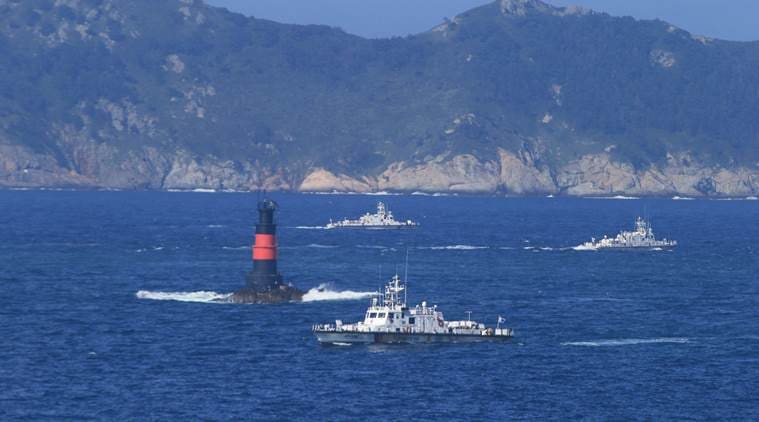Harnessing Wind Energy: The Future Of Eco-Friendly Train Travel

Table of Contents
The Environmental Imperative: Reducing Railway's Carbon Footprint
The current state of railway emissions presents a significant environmental challenge. Traditional train travel, particularly diesel locomotives, contributes substantially to global greenhouse gas emissions and air pollution. Shifting towards sustainable alternatives is crucial for mitigating climate change and improving air quality.
The Current State of Railway Emissions:
- Global railway emissions: Railways globally account for a significant percentage of transportation-related CO2 emissions, although the exact figure varies depending on the region and the proportion of electrified vs. diesel lines.
- Comparison to other transport modes: While generally more efficient than road transport per passenger-kilometer, railways still contribute significantly to the overall carbon footprint, especially in regions heavily reliant on diesel trains.
- Impact of diesel locomotives: Diesel locomotives are a major source of air pollution and greenhouse gas emissions within the railway sector, contributing significantly to local air quality issues and climate change.
The environmental consequences of these emissions are severe. Air pollution from diesel trains causes respiratory illnesses and other health problems, while the release of greenhouse gasses contributes directly to climate change and its associated impacts like rising sea levels and extreme weather events.
Wind Energy as a Solution:
Wind energy offers a compelling solution to the environmental challenges posed by traditional railway systems. It's a renewable energy source that significantly reduces our reliance on fossil fuels.
- Renewable nature of wind energy: Wind is a virtually inexhaustible resource, providing a sustainable alternative to finite fossil fuels.
- Reduction in greenhouse gas emissions: Replacing diesel locomotives with electric trains powered by wind energy drastically reduces greenhouse gas emissions, contributing to a cleaner environment.
- Long-term environmental benefits: Investing in wind energy for railways offers long-term environmental benefits, including improved air quality, reduced contribution to climate change, and a more sustainable transportation system.
By harnessing the power of the wind, we can significantly reduce the railway sector's carbon footprint and create a more environmentally responsible transportation network. This shift away from fossil fuels improves air quality, leading to a healthier environment and improved public health.
Technological Advancements: Harnessing Wind Power for Trains
Several technological advancements are paving the way for the integration of wind energy into railway systems. These approaches offer different avenues for powering eco-friendly trains.
Onshore Wind Farms and Power Transmission:
The most established method involves powering electric trains through the electrical grid supplied by onshore wind farms. This approach leverages existing infrastructure while promoting renewable energy sources.
- Efficiency of electricity transmission: Modern power grids are relatively efficient at transmitting electricity over long distances, making it feasible to power trains from distant wind farms.
- Challenges of integrating renewable energy sources into grids: Integrating intermittent renewable energy sources like wind power into the electricity grid requires sophisticated energy management systems and potentially energy storage solutions.
- Geographical limitations: The feasibility of this approach depends on the proximity of suitable wind farm locations to railway lines and the capacity of the existing power grid.
Efficient power transmission is crucial for success; technological advancements in smart grids and energy storage, such as large-scale battery systems or pumped hydro storage, are essential to address the intermittency of wind power.
Onboard Wind Turbine Technology:
A more ambitious approach involves integrating wind turbines directly onto trains. This concept presents significant engineering challenges but offers the potential for self-sufficient power generation.
- Potential benefits: Onboard wind turbines could provide auxiliary power, reducing the energy demand from the main power grid.
- Technological challenges: Designing and integrating efficient, lightweight, and robust wind turbines onto trains presents significant technological hurdles.
- Feasibility studies: Research and development are ongoing to assess the feasibility and viability of this innovative technology.
- Design considerations: Aerodynamics, structural integrity, and maintenance requirements are crucial design considerations for onboard wind turbines.
While this approach is still in its early stages, successful implementation could lead to truly self-sufficient and eco-friendly trains, particularly suitable for certain routes and applications. The aerodynamic impact and potential energy generation capacity need further investigation.
Economic and Societal Benefits: A Sustainable Transportation Future
The transition to wind-powered trains offers numerous economic and societal benefits, creating a more sustainable and equitable future for transportation.
Reduced Operational Costs:
Utilizing wind energy can lead to significant long-term cost savings for railway operators.
- Lower fuel costs: Wind energy is a cost-effective alternative to fossil fuels in the long run, reducing operational expenditures.
- Reduced maintenance: Electric trains generally require less maintenance than diesel locomotives, further contributing to cost savings.
- Government incentives for renewable energy adoption: Many governments offer financial incentives to promote renewable energy adoption, making wind-powered rail more economically attractive.
These cost savings contribute to more affordable and accessible train travel, making it a more competitive transportation option.
Job Creation and Economic Growth:
The shift to wind-powered rail stimulates job creation in various sectors.
- Manufacturing, installation, maintenance of wind turbines: The manufacturing, installation, and maintenance of wind turbines create numerous employment opportunities.
- Development of supporting infrastructure: The development of supporting infrastructure, such as power grids and energy storage systems, also creates jobs.
This economic activity can significantly benefit rural communities near wind farms, leading to regional economic growth and development.
Improved Public Health:
The reduction in air pollution from wind-powered trains leads to significant public health improvements.
- Fewer respiratory illnesses: Reduced air pollution leads to fewer cases of respiratory illnesses and other health problems.
- Improved air quality in urban areas: Wind-powered trains contribute to better air quality in urban areas, particularly near railway lines.
- Enhanced quality of life: Improved air quality contributes to an enhanced quality of life for communities living near railway lines.
The wider health benefits associated with combating climate change and reducing greenhouse gas emissions are substantial, leading to a healthier and more sustainable society.
Conclusion:
Harnessing wind energy for eco-friendly train travel presents a compelling vision for a sustainable transportation future. By embracing technological advancements and acknowledging the significant environmental, economic, and societal benefits, we can pave the way for a cleaner, greener railway system. The transition to wind-powered trains requires collaborative efforts from governments, industries, and researchers. Let's embrace this innovative approach and accelerate the adoption of harnessing wind energy for eco-friendly train travel worldwide. The future of rail transportation is green, and wind power is key to unlocking its full potential.

Featured Posts
-
 Un Violon A L Ecran La Matinale Avec Mathieu Spinosi
May 03, 2025
Un Violon A L Ecran La Matinale Avec Mathieu Spinosi
May 03, 2025 -
 Algerie Les Partis Politiques Pt Ffs Rcd Jil Jadid Et La Nouvelle Loi
May 03, 2025
Algerie Les Partis Politiques Pt Ffs Rcd Jil Jadid Et La Nouvelle Loi
May 03, 2025 -
 Understanding The Implications Of Chinese Ship Activity Near Sydney
May 03, 2025
Understanding The Implications Of Chinese Ship Activity Near Sydney
May 03, 2025 -
 Fortnite Servers Down Chapter 6 Season 2 Launch Delayed Indefinitely
May 03, 2025
Fortnite Servers Down Chapter 6 Season 2 Launch Delayed Indefinitely
May 03, 2025 -
 Wyjatkowe Wyroznienia Solidarnosc I Republika Analiza Roznic I Podobienstw
May 03, 2025
Wyjatkowe Wyroznienia Solidarnosc I Republika Analiza Roznic I Podobienstw
May 03, 2025
